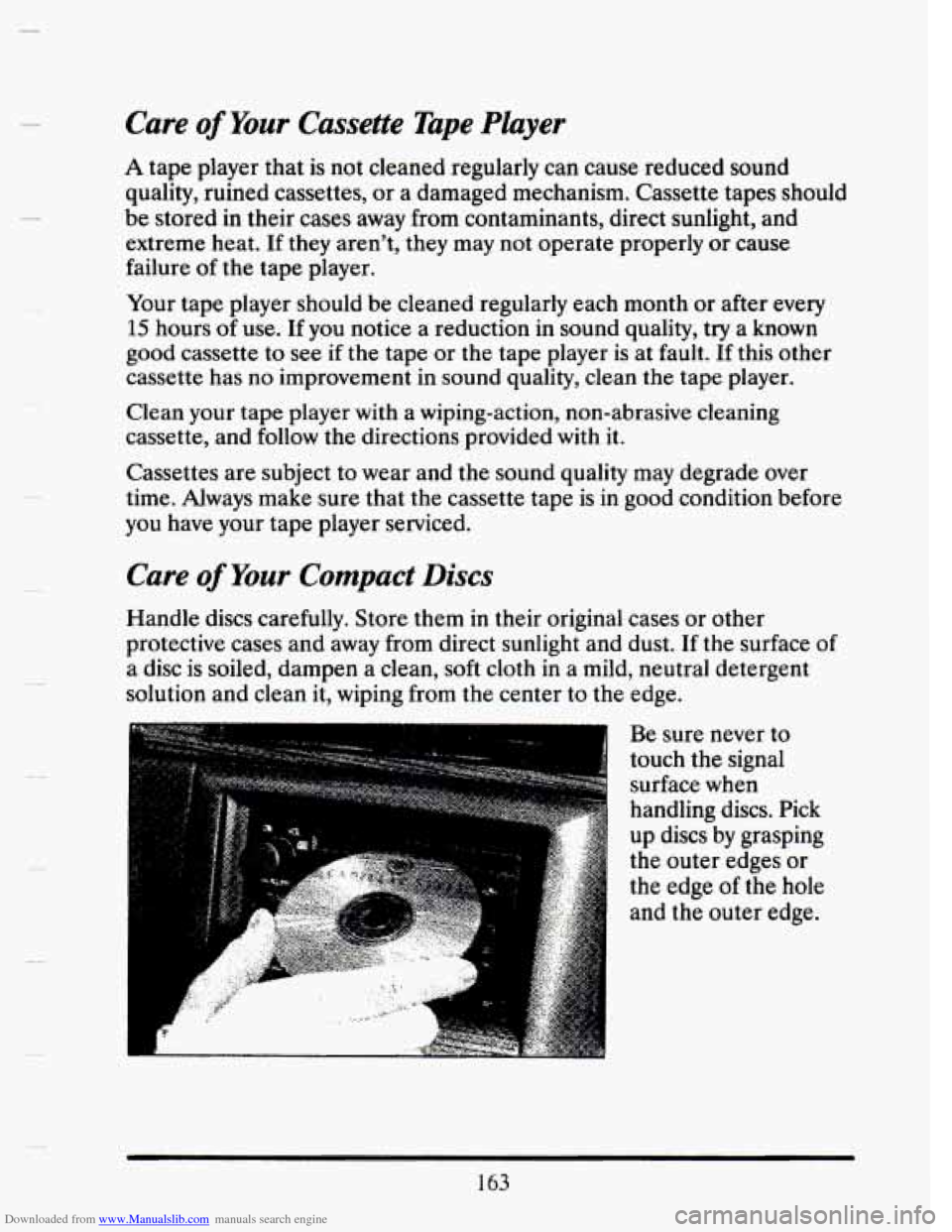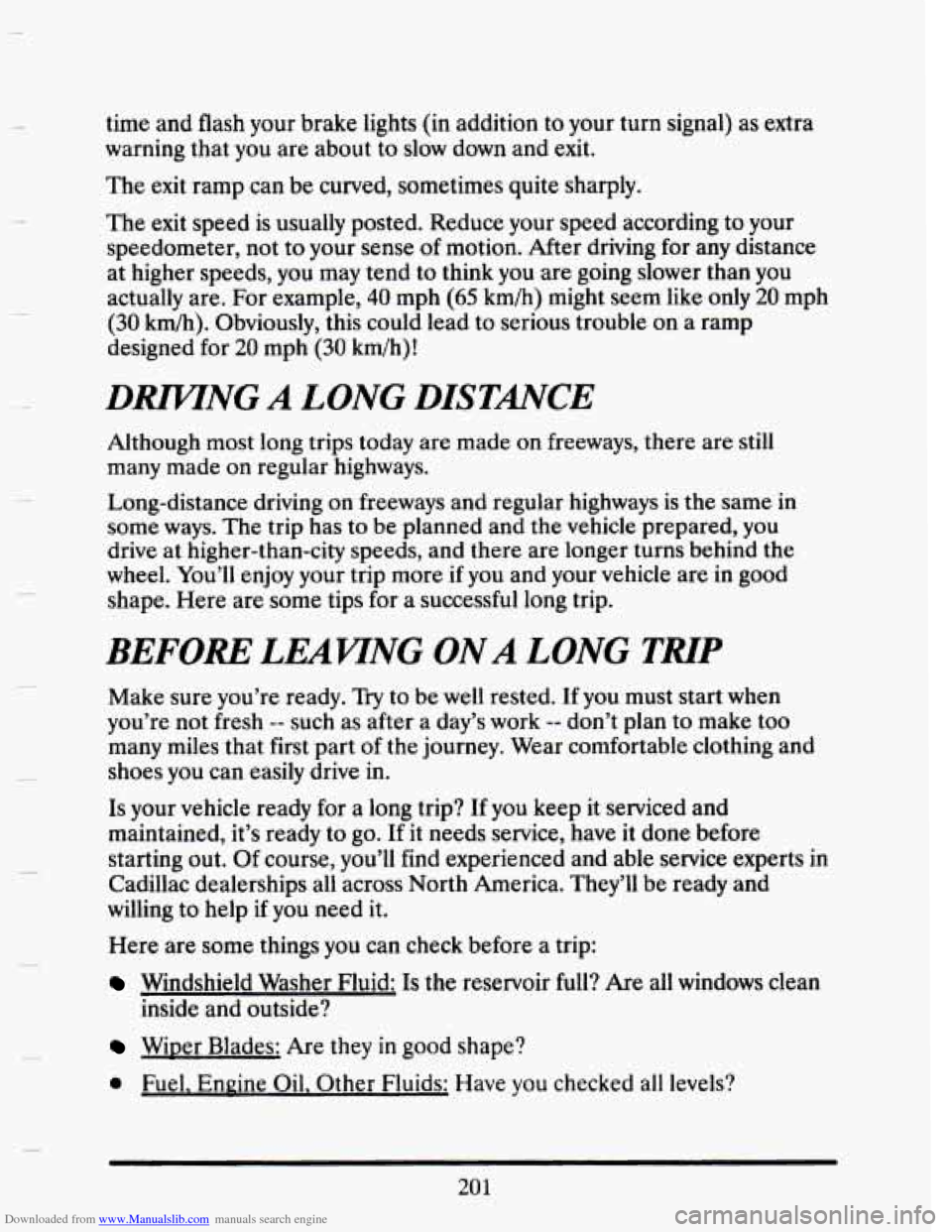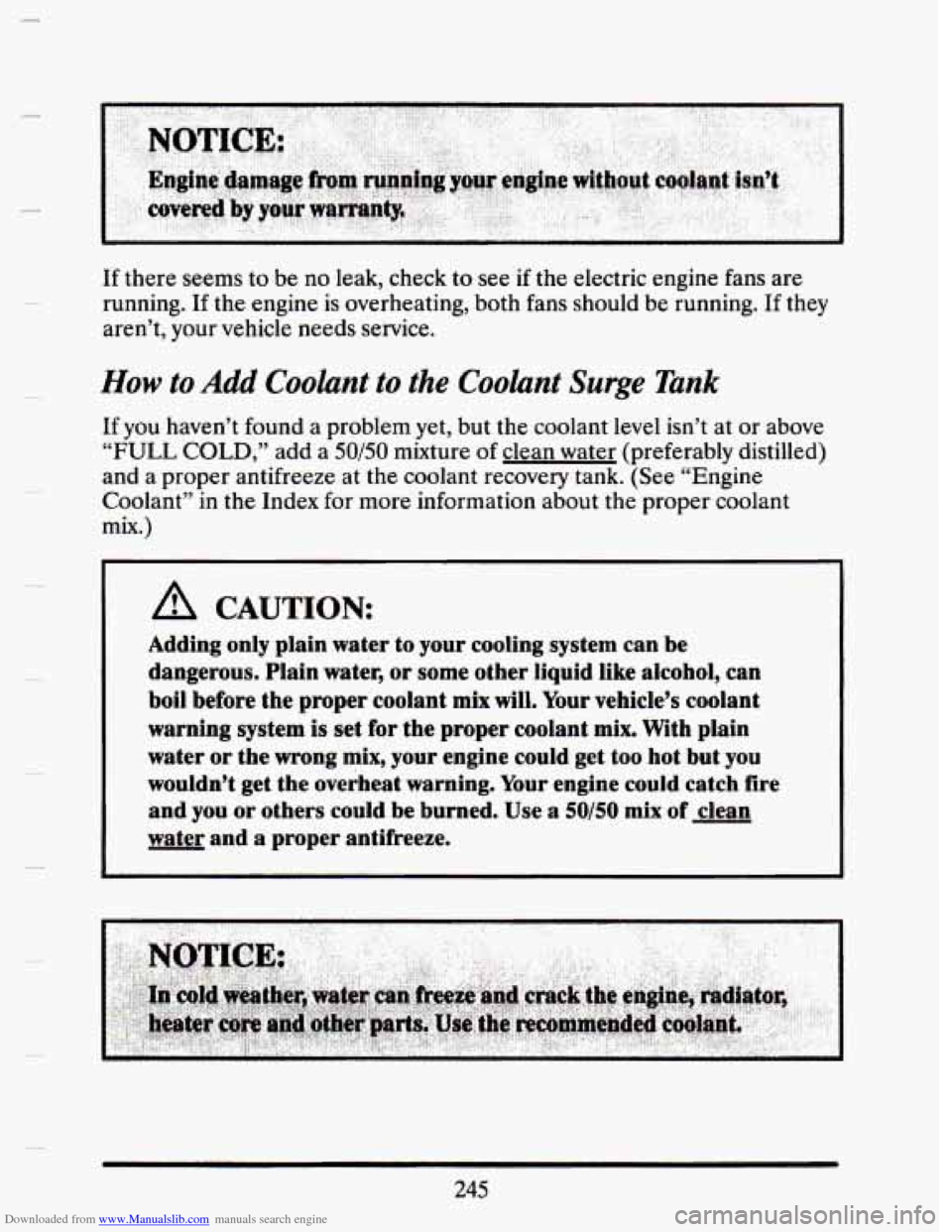Page 158 of 407

Downloaded from www.Manualslib.com manuals search engine You’ll see how much oil life you have left, as a percentage. So, if you see
“95 OIL LIFE INDEX,” for example, that means that the way you’re
driving your car,
95% of your current oil life is still left.
The
“OIL LIFE INDEX’ may say to change the oil sooner than your
maintenance schedule. This can happen
if driving conditions, such as
short trips in cold weather, cause shorter oil life. Always keep a written
record
of the mileage and date when you last changed your oil. For more
information on
when to change your oil, see the “Maintenance
Schedule.”
If you see “CHANGE OIL
SOON,” it means that you have less than 10%
of your oil life left, and you should consider changing your engine oi\
l.
If you see
“CHANGE ENGINE OIL,” it means the oil life is gone and
you should change the oil right away (certainly within
200 more miles
[320 km]).
The system probably will say to change the oil between 3000 miles (5000
km) and 7500 miles (12500 km), but it may even say to change it before
3000 under very severe conditions. It all depends on your driving
patterns. If it’s been
7500 miles (12500 km) it will say to change oil.
There are
two things the system doesn’t do:
It can’t sense heavy dust in the places where you drive. If you drive in
a dusty area, you should change your oil every 3000 miles (5000 km)
or
3 months (whichever comes first), unless the display says to change
it even sooner than that.
It doesn’t check how much oil you have, so you’ll still have to check
Also, for the system to work right, it is important that you use SG oil, as
discussed earlier. for that.
To see how,
see Index under “Engine Oil.”
when You’ve Changed the Oil
When new oil is put in, you’ll need to reset your system. To do it, display
the “OIL LIFE INDEX’ by pressing the “Information” button. Then
press and hold the “STORE/RECALC’ buttons
until the display shows
“100.”
144
y.
u
H
U
Page 177 of 407

Downloaded from www.Manualslib.com manuals search engine 3
Care of Your Cassette Tape Player
A tape player that is not cleaned regularly can cause reduced sound
quality, ruined cassettes, or a damaged mechanism. Cassette tapes should
be stored
in their cases away from contaminants, direct sunlight, and
extreme heat.
If they aren't, they may not operate properly or cause
failure of the tape player.
Your tape player should be cleaned regularly each month or after every
15 hours of use. If you notice a reduction in sound quality, try a known
good cassette to see
if the tape or the tape player is at fault. If this other
cassette has no improvement
in sound quality, clean the tape player.
Clean your tape player
with a wiping-action, non-abrasive cleaning
cassette, and follow the directions provided
with it.
Cassettes are subject to wear and the sound quality may degrade over
time. Always make sure that the cassette tape is
in good condition before
you have your tape player serviced.
Care of Your Compact Discs
Handle discs carefully. Store them in their original cases or other
protective cases and away from direct sunlight
and dust. If the surface of
a disc is soiled, dampen a clean, soft cloth
in a mild, neutral detergent
solution and clean it, wiping from the center to the edge.
A
Be sure never to
touch the signal
surface when
handling discs. Pick
up discs
by grasping
the outer edges or
the edge
of the hole
and the outer edge.
163
Page 215 of 407

Downloaded from www.Manualslib.com manuals search engine time and flash your brake lights (in addition to your turn signal) as extra
warning that you are about to slow down and exit.
The exit ramp can be curved, sometimes quite sharply.
The exit speed is usually posted. Reduce your speed according
to your
speedometer, not to your sense
of motion. After driving for any distance
at higher speeds, you may tend to think you are going slower than you
actually are. For example,
40 mph (65 km/h) might seem like only 20 mph
(30 km/h). Obviously, this could lead to serious trouble on a ramp
designed for
20 mph (30 km/h)!
DMNG A LONG DISTANCE
Although most long trips today are made on freeways, there are still
many made
on regular highways.
Long-distance driving on freeways and regular highways is the same
in
some ways. The trip has to be planned and the vehicle prepared, you
drive at higher-than-city speeds, and there are longer turns behind
the
wheel. You’ll enjoy your trip more if you and your vehicle are in good
shape. Here are some tips for a successful long trip.
BEFORE LEAWNG ONA LONG THP
Make sure you’re ready. Try to be well rested. If you must start when
you’re not fresh
-- such as after a day’s work -- don’t plan to make too
many miles that first part of
the journey. Wear comfortable clothing and
shoes
you can easily drive in.
Is your vehicle ready for a long trip? If you keep it serviced and
maintained, it’s ready to
go. If it needs service, have it done before
starting out. Of course, you’ll find experienced and able service experts
in
Cadillac dealerships all across North America. They’ll be ready and
willing to help
if you need it.
Here are some things
you can check before a trip:
Windshield Washer Fluid: Is the reservoir full? Are all windows clean
inside and outside?
Wiper Blades: Are they in good shape?
0 Fuel. Enpine Oil. Other Fluids: Have you checked all levels?
201
Page 233 of 407
Downloaded from www.Manualslib.com manuals search engine Maintenance when Trailer Towing
Your vehicle will need service more often when you’re pulling a trailer.
See the Maintenance Schedule for more on this. Things that are
especially important
in trailer operation are automatic transaxle fluid
(don’t overfill), engine oil, axle lubricant, belts, cooling system, and brake
adjustment. Each
of these is covered in this manual, and the Index will
help you find them quickly. If you’re trailering, it’s a good idea to review
these sections before you start your trip.
Check periodically to see that all hitch nuts and bolts are tight.
219
Page 249 of 407
Downloaded from www.Manualslib.com manuals search engine COOLING SYSTEM - 4.9 LITER
When you decide it's safe to lift the hood, here's what you'll see:
v Coolant recovery tank
v Radiator pressure cap
Electric engine fans
1 A CAUTION:
An electric fan under the hood can start up even when the
engine is not running and can injure you,
Keep hands, clothing
and
tools away from any underhood electric fan,
If the coolant inside the coolant recovery tank is boiling, don't do
anything else until
it cools down.
235
Page 251 of 407
Downloaded from www.Manualslib.com manuals search engine L ..
r-
r
r
t
How to Add Coolant to the Coolant Recovery Tank
If you haven’t found a problem yet, but the coolant level isn’t at or above
“FULL COLD,” add a 50/50 mixture of clean water (preferably distilled)
and
a proper antifreeze at the coolant recovery tank. (See “Engine
Coolant” in the Index for more information about the proper coolant
mix.)
A CAUTION
Adding only plain water to your cooling system can be
dangerous. Plain water, or some other liquid like alcohol, can
boil before the proper coolant
mix will. Your vehicle’s coolant
warning system is set for the proper coolant
mix. With plain
I water or the wrong mix, your engine could get too hot but you
~ wouldn’t get the overheat warning. Your engine could catch fire
~ and you or others could be burned. Use a 50/50 mix of clean
~ water and a proper antifreeze.
r
r 237
Page 258 of 407
Downloaded from www.Manualslib.com manuals search engine I A CAUTION
An electric fan under the hood can start up even when the
engine
is not running and can injure you. Keep hands, clothing
and tools
away from any underhood electric fan.
If the coolant inside the coolant surge tank is boiling, don’t do anything
else until it cools
down.
The coolant level
should be at or above
“FULL COLD.” If it
isn’t,
you may have a
leak in the radiator
hoses, heater hoses,
radiator, water pump
or somewhere else in
the cooling
system.
A CAUTION:
Heater and radiator hoses, and other engine parts, can be very
hot. Don’t touch them.
If you do, you can be burned.
Don’t
run the engine if there is a leak If you run the engine, it
could lose
all coolant. That could cause an engine fire, and you
could be burned. Get any leak fixed before you drive the vehicle.
244
Page 259 of 407

Downloaded from www.Manualslib.com manuals search engine ...-
c
If there seems to be no leak, check to see if the electric engine fans are
running. If the engine
is overheating, both fans should be running. If they
aren’t, your vehicle needs service.
How to Add Coolant to the Coolant Surge Tank
If you haven’t found a problem yet, but the coolant level isn’t at or above
“FULL COLD,” add a 50/50 mixture of clean water (preferably distilled)
and a proper antifreeze at
the coolant recovery tank. (See “Engine
Coolant”
in the Index for more information about the proper coolant
mix.)
A CAUTION
Adding only plain water to your cooling system can De
dangerous. Plain water, or some other liquid like alcohol, can
boil before the proper coolant mix will.
Your vehicle’s coolant
warning system is set
for the proper coolant mix. With plain
water
or the wrong mix, your engine could get too hot but you
wouldn’t get the overheat warning. Your engine could catch fire
and you or others could be burned. Use a
50/50 mix of clean
water and
a proper antifreeze.
245